'EA was a bit freaked out': The making of Dead Space
With a remake on the horizon, the developers of a sci-fi horror classic tell their story.
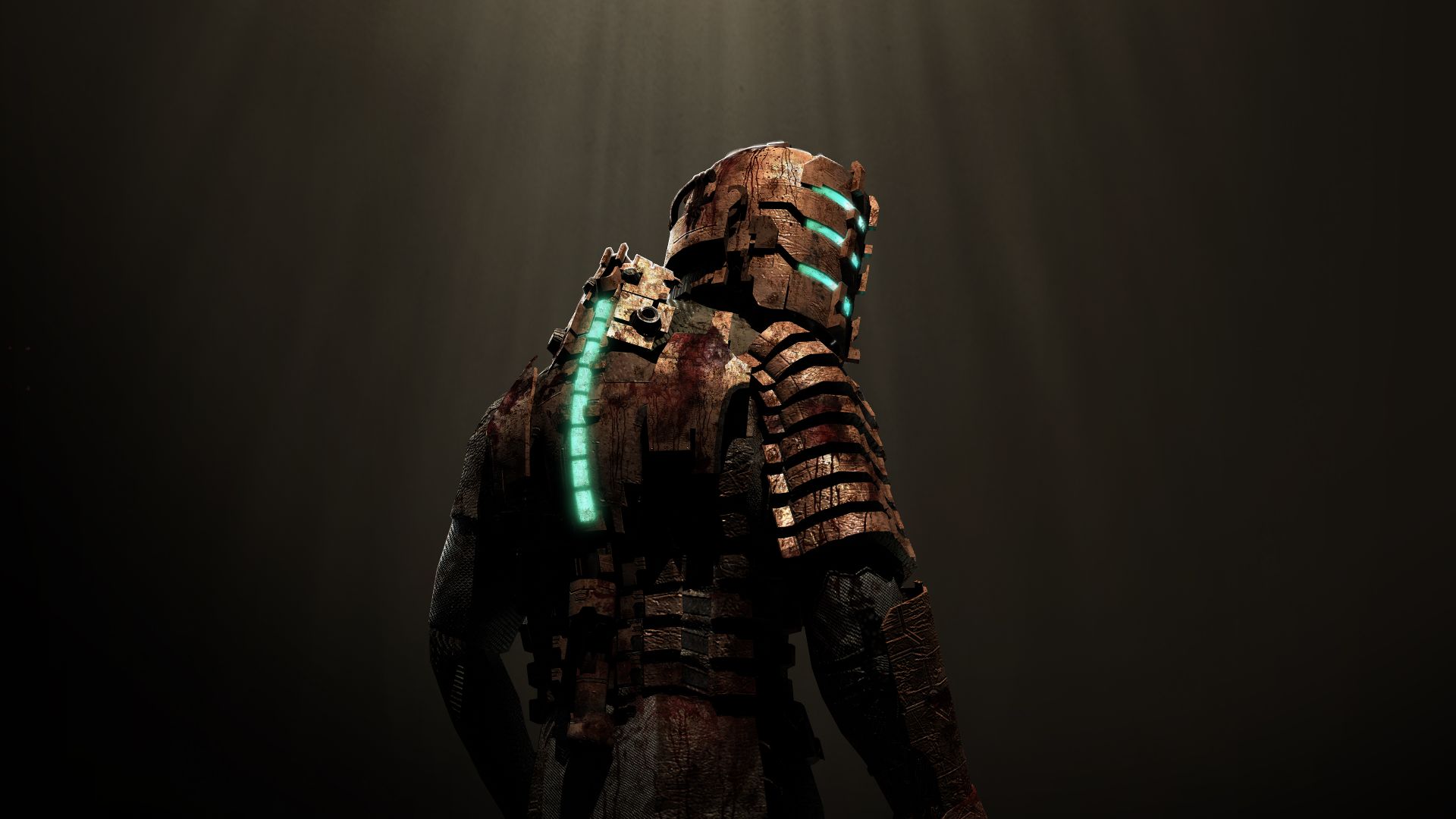
Looking at the recent early footage of the Dead Space remake, the most striking thing is just how similar it looks to the 13-year-old original. Sure, it's shinier and glossier and your Plasma Cutter now sends flesh flying off Necromorphs like porridge in the wind, but overall it puts into perspective just what a masterpiece the first game was.
As gamers start derusting their Ripper blades and lubing their Line Guns with WD-40 in preparation for the remake, I've looked back with the developers of the original Dead Space on how they brought together a uniquely timeless classic. When Dead Space creator and Visceral Games general manager Glen Schofield proposed a sci-fi horror game to EA, he says that "EA was a bit freaked out, because it was something they hadn't done since System Shock."
Schofield adjusted his idea into a potential System Shock 3, more with the desire to convince EA than to create a true successor to the immersive sim. This seeded the idea with the publisher, though the breakthrough came when Resident Evil 4 launched in 2005. Suddenly, survival horror looked commercially viable again, and in the end it was the now-famous "Resident Evil in space" pitch that sealed the deal.
Many of the game's developers, including producer Chuck Beaver and production designer Ben Wanat, were brought onto Dead Space fresh from licensed titles in the Lord of the Rings and Bond franchises. "We were all coming from the straitjackets of working with licensed IPs where you have to obey all the rules really carefully," says Chuck. "So when this opportunity came to do the new IP, everyone was ready to fly wild creatively."
UI Not?
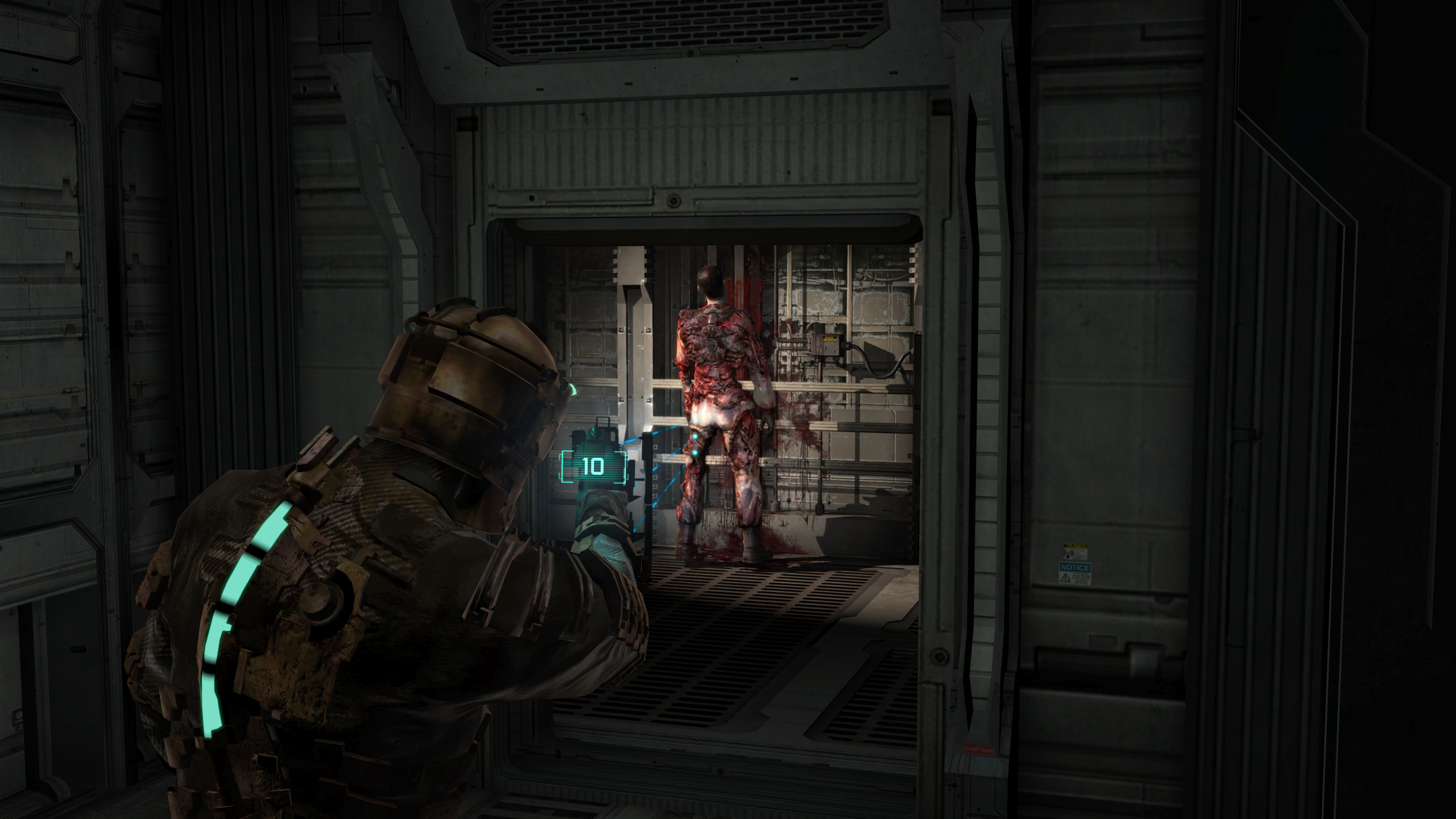
One of the hallmarks of Dead Space (that's being retained for the remake) was the completely in-world UI; video communication and the inventory were hologram projections beamed from Isaac's suit, upgrades were purchased at machines with proper in-game screens, ammo counts were displayed on Isaac's weapons and—lest we forget—the health bar was elegantly displayed along the spinal ridges of Isaac's suit. The immersion was unparalleled.
One of the concerns when designing this UI was that it would be too bright—"lit up like a Christmas tree", as Ben Wanat puts it. But very quickly, Ben himself put those concerns to bed, according to Chuck Beaver. "He went away for a weekend and came back with a mockup of the UI that was so good that it ran through the entire series," says Chuck. "He did it all using the VFX system."
Ben's VFX mockup was so good that it was used until late in development. "Each of those little health bars was an effect, and eventually somebody in engineering changed the colour and we switched it out for a proper tube and projected graphic," Ben tells me.
The biggest gaming news, reviews and hardware deals
Keep up to date with the most important stories and the best deals, as picked by the PC Gamer team.
The ghostly grey-blue colour of these elements, especially in the video communications, helped evoke that well-founded feeling that you were chasing ghosts around the forsaken Planet-Cracker ship, The USG Ishimura.
Assembling Ishimura
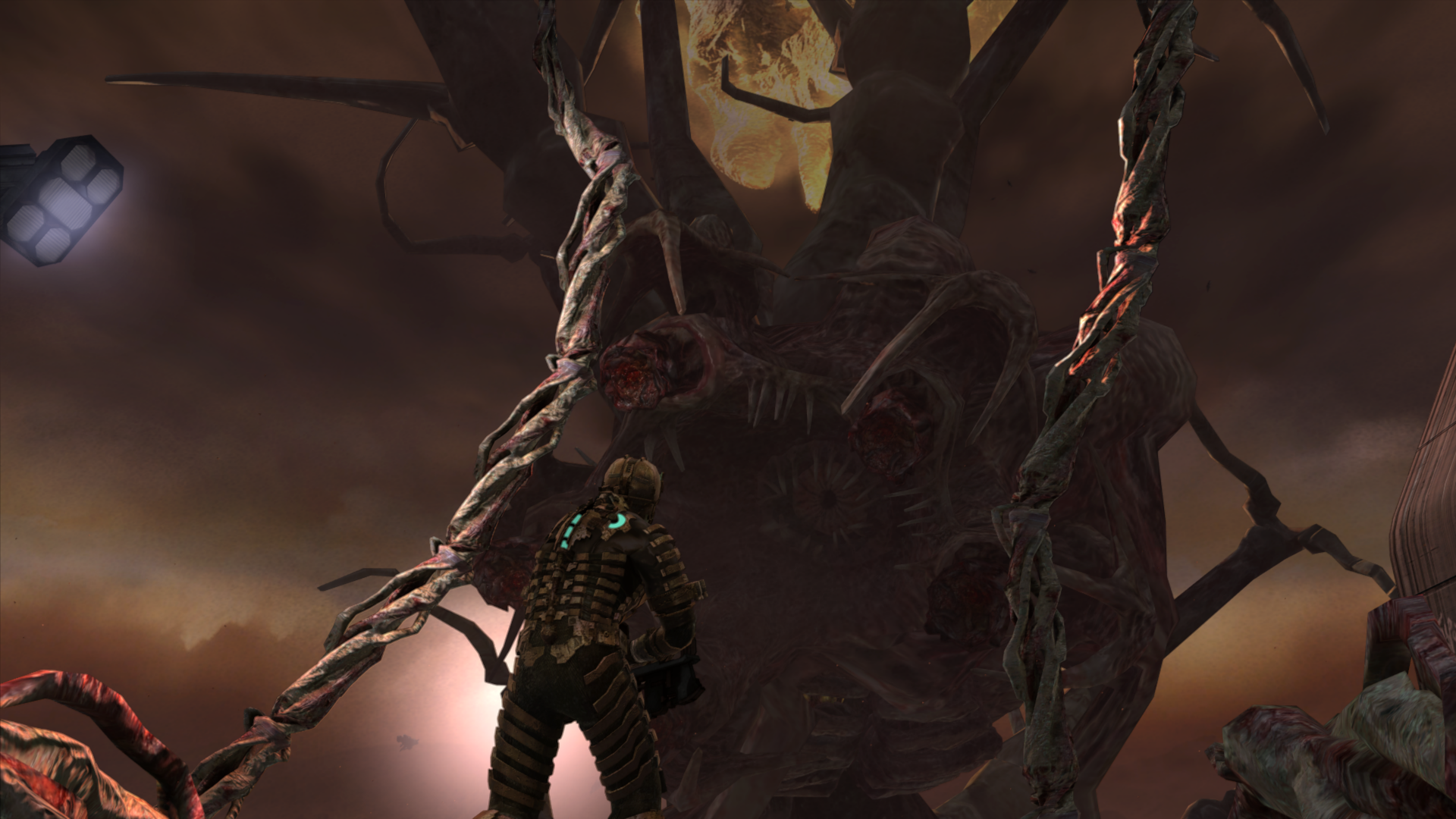
At a time when 1080p wasn't yet the norm on most displays, the fine architecture of the Ishimura got a little lost amidst the jagged antialiasing and murky resolutions. But playing it on PC today, those uninviting ridges of the ship's exterior look like they could skewer a meteor, and your eyes are drawn to the eerie shadows lingering in distant corners of larger spaces. There's a harsh texture to this ship, which seems to groan and breathe with mechanical menace.
Art director Ian Milham fills me in on the associations and inspirations for the Ishimura. "It was a mashup of gothic cathedral and offshore oil rig—both are huge in scale and deconstructed, with their guts clearly visible," he tells me. "The light fixtures were based on dentist's lights, which have a lot of uncomfortable and scary connotations. The signage was inspired by Japanese subway signs, since they also are helping people through a labyrinth environment."
But the Ishimura wasn't always such a gracefully gloomy space. "When making the prototype for the original Xbox, we built some corridors and areas of the Ishimura, and it looked like the walls were made out of chainsaws and claws and stuff," Ben recalls. "I was like, 'It's a little on the nose, you know?' So the ship wants to kill you? No shit, there's bleeding fangs sticking out of the walls!"
Soon after this, Ben took a lead role in crafting details into the Ishimura. "I would carve into the negative space to create lots of claustrophobic 90-degree bends, silhouettes and basically anything I could do to fuck with your head while you were moving through the space," he says. "The basic thing was to get parallax everywhere we could. Parallax always gives you constantly shifting shadows and points of view on the room."
Early in the game, the Engine Room showcases this sensory intensity; the space is enshrouded with fog, with strange shapes and shadows cast by the gut-like pipes and aggressive geometry of the space. You feel like you're deep in the bowels of a machine, always threatening to swallow you up.
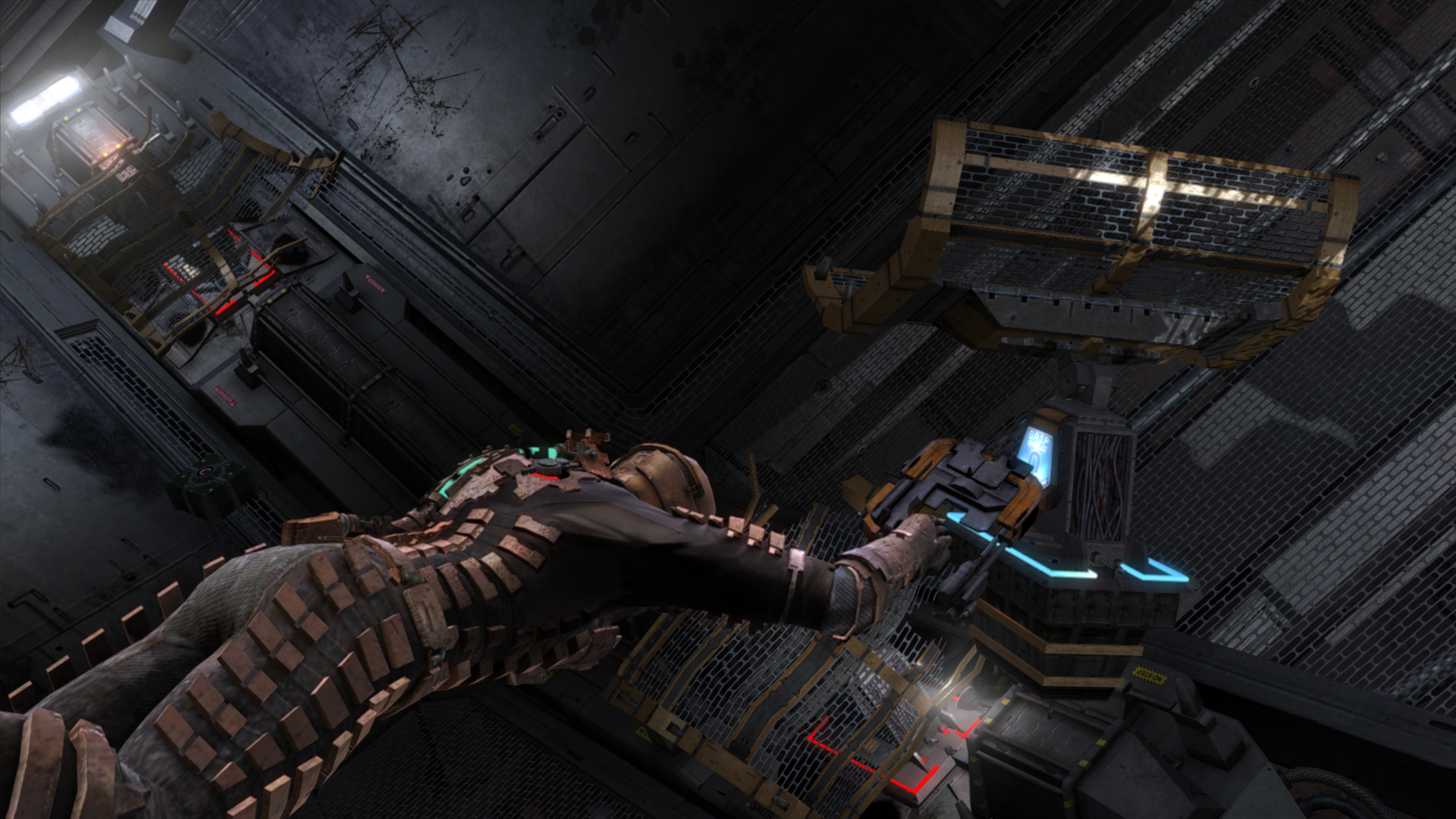
Few horror games play on the tension between power fantasy and powerlessness quite like this. Isaac may be an engineer, but his two key abilities let him slow down time and lift heavy metal equipment by pointing his hand at it—probably the two hippest videogame superpowers of the 2000s. He's a metalclad medieval knight with a sci-fi makeover, slicing down enemies whose spindly appendages are just begging to be severed by his power tools.
But despite your formidable arsenal, Dead Space always feels like a struggle, largely thanks to Isaac moving around very much like the metal-coated man that he is. He's a slow runner, turns with the deliberation of a cargo ferry, and inexplicably stops for a second when you change weapons (prompting so many screams of "Hurry the fuck up, Isaac!").
This cumbersome movement was of course inspired by Resident Evil 4, but in a new console generation shaped by fast, fluid shooters like Halo, Call of Duty, even Gears of War, Visceral had to adapt to the changing times.
"We installed Resident Evil 4 tank controls in Dead Space. It was really slow, and you couldn't move while firing," Chuck tells me. "We were so enamoured with that system at the time we were making Dead Space. The team was like, 'This is a survival horror game, you're supposed to be clunky.'"
But these idealistic visions of survival horror had to be compromised. "It took three focus tests to make it clear that the audience had moved on from old-fashioned horror controls," he says ruefully. Shoot-and-move was reinstated, and very late in development Glen altered Isaac's animations to create the illusion that he was moving faster than he actually was.
Little did Visceral know that years later videogame horror would return to that slower, panic-inducing pace with games like Alien: Isolation, Resident Evil 2: REmake, and the upcoming Dead Space remake.
Severance Slay
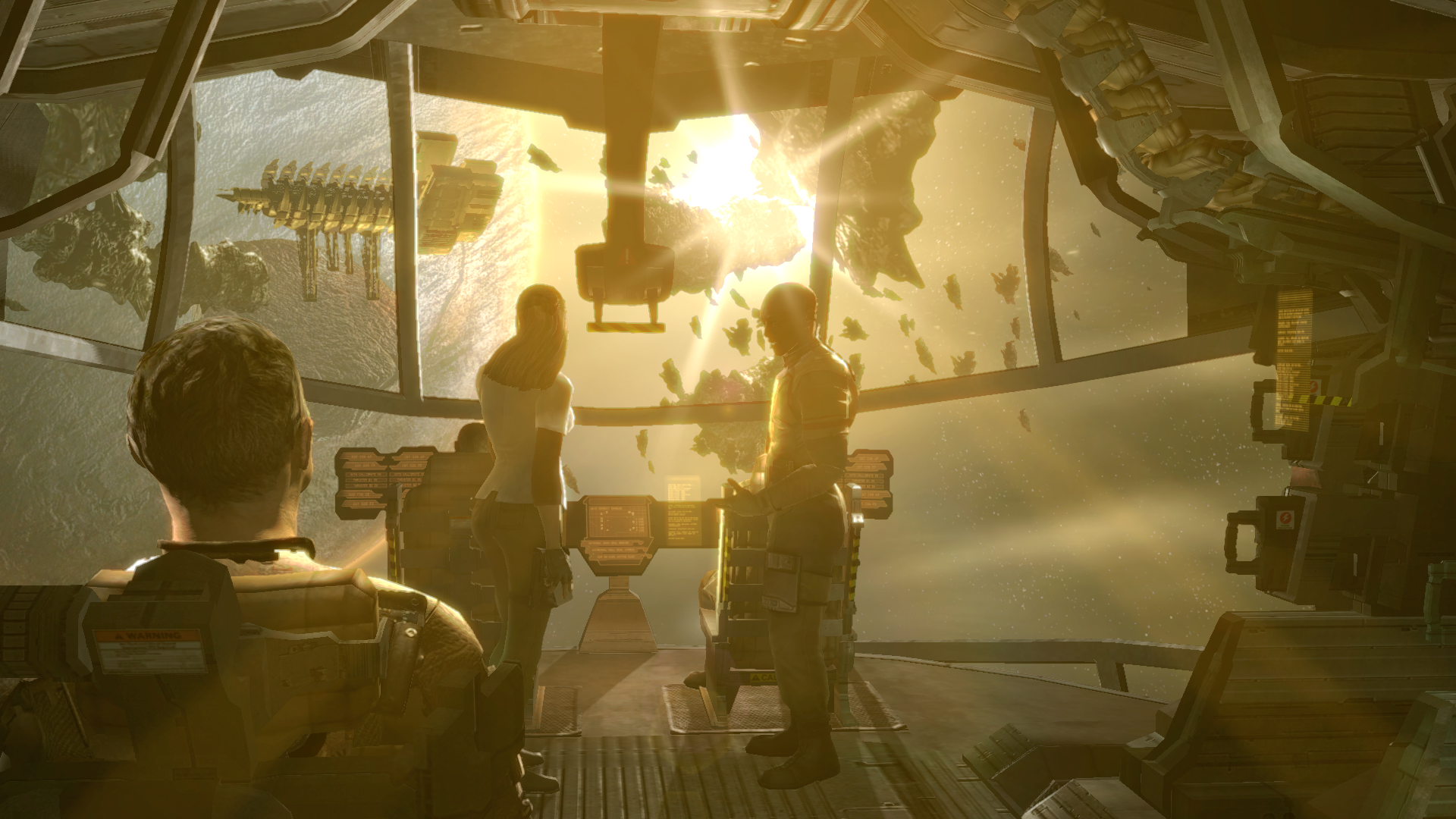
The Necromorphs were a unique kind of threat—fragile yet threatening. You could blow a running Necromorph's legs out from under them, with the momentum sending their upper body hurtling towards you. It appears dead, but then props itself up by its claws and begins crawling towards you. Even though the creature is crippled and at the mercy of your heavy metal boots, it's relentless in pursuing you.
The Necromorphs took quite a bit of tweaking and stretching to feel readable and fun. "We started elongating limbs and making things thinner, creating kind of exposed pulpy areas where there's a little bit more of an obvious connection to where the dismemberment point was going to be," says Ben. "We used weakspot in some areas, but the glowing weakspot is such a horrible cliché that we tried to refrain from it where we could."
Dead Space had its share of in-your-face scripted thrills, but there were some neat systemic tricks too, such as the vents that Necromorphs may or may not ambush you from depending on how close you stood to them. "It was a really intricate system of vents that we built throughout the game," Glen tells me. "If you listen, you'll actually hear enemies crawl through the vents, and whenever we could we'd try to have a real enemy in there."
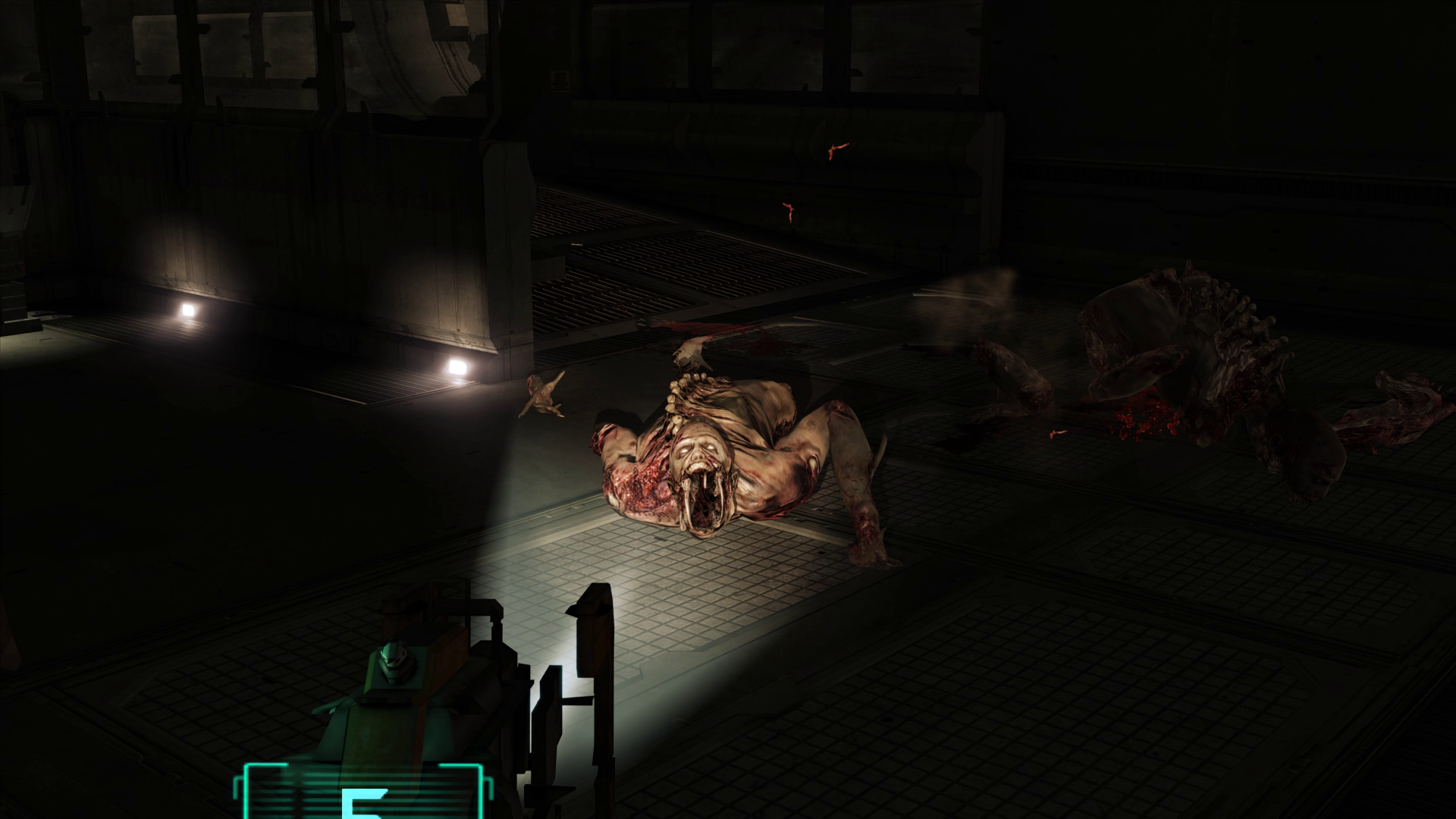
Visceral imbued Dead Space with its own strong identity, while borrowing from the great works in its genre. Glen Schofield happily admits that the air-raid siren you hear in the game's ambience is an homage to Akira Yamaoka and the nightmare sequence in Silent Hill. The hallucinations and dementia angle came relatively late in development, and were pushed by Ben Wanat's love of Solaris, while its almost anachronistic twist on Resident Evil 4's control style has aged surprisingly well, making the game feel more timeless than many of its contemporaries.
When I ask the developers what Dead Space remake needs to retain from the original, the unifying theme is immersion, with Ben Wanat zeroing in on the audio in particular. "As long as they understand the essence of what's happening with that audio mix and why almost all of the psychology of the terror of that game is from the audio, then I think they're on a really good path," he says.
That Dead Space essence will also be palpable in another upcoming game. Glen Schofield is currently working with his new studio Striking Distance Studios on The Callisto Protocol, a spiritual successor to Dead Space set on a prison colony on the titular Jovian moon. One of the key lessons he's carrying over from Dead Space is to be unpredictable in delivering scares.
Glen recounts how at one point during the development of Dead Space an executive proposed a 'horror meter' that creates a scare on a 20-minute timer. "That is the exact opposite of what I want," says Glen. "Something I'm taking into Callisto is that scaring intention is almost like a gut feel when you're making it. There's no 'right' timing, it's really a matter of how you feel as you're going through the game."
One thing that's certain is that the Dead Space remake developer, Motion Studios, is working with a finely crafted masterpiece, whose own sequels showed how hard it was to build upon. Perhaps the best advice for the team behind the remake is to make like Isaac: tread carefully, target the weakpoints, and leave the rest of the body intact.
Robert is a freelance writer and chronic game tinkerer who spends many hours modding games then not playing them, and hiding behind doors with a shotgun in Hunt: Showdown. Wishes to spend his dying moments on Earth scrolling through his games library on a TV-friendly frontend that unifies all PC game launchers.

